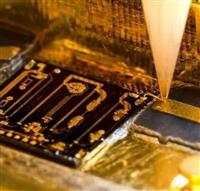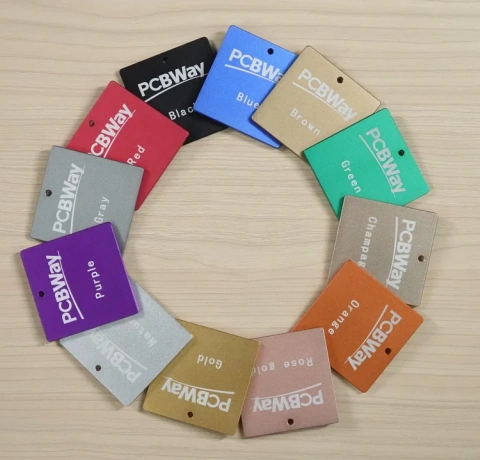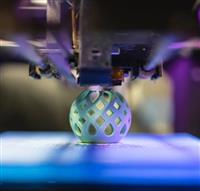Q: 1.Who is PCBWay.com?
PCBWay is manufacturer specializing in PCB prototyping, low-volume production and PCB Assembly service under one roof. PCBWay strives to be the easiest manufacturer for engineers to work with. PCBWay – PCB Prototype the Easy Way!
Q: 2.Do you accept to assemble the boards that are not made by PCBWay?
Currently we do not use other’s PCB to assemble at our facilities. We offer the PCB fabrication, parts sourcing and PCB assembly in a continuous and smooth manner to save our customer’s time and money.
Q: 3.What files and documents do you request for my PCBA orders?
We need Gerber files, Centroid data and BOM for your PCBA orders. As have already placed your PCB order with us, actually you only need to send the latter two if your PCB Gerber files have included the layers of silkscreen, copper track and solder paste. If your PCB Gerber files are missing any of the above-mentioned three layers, please resend them, as this is the minimum request for PCBA. For the best possible result, please also send assembly drawings, instructions and photos to us to avoid any ambiguous and even mistaken placement of parts, though these are not required by most of the assemblers.
Q: 4.What is Centroid?
Centroid is the special file for assembly used for quickly programming the assembly machines. This is also known as aka Insertion, Pick-N-Place, or XY Data. Some of the CAD tools will automatically generate this file and some not, but you may need to modify the file and then generate the Centroid file. The Centroid file describes the position and orientation of all the surface mount parts, which includes the reference designator, X and Y position, rotation and side of Board (Top or Bottom). Only surface mounting parts are listed in the Centroid.
Q: 5.How do you request for the shipping and marking of the parts for the consigned or kitted order?
We hope you can mark on any individual package or box with the corresponding line number on BOM, manufacturer’s part# or customer’s part#, quantities. A detailed packing list is preferred to enable us to count and check upon receipt of your parts.
Q: 6.What is your requirement on the parts overages for consigned/kitted PCBA?
Unused and excessive parts supplied by you or purchased by us will not be returned by default. If you want the parts to be sent back to you with the assembled boards, please contact your service representitive or make a note on your related order, and let us know which parts to send.
SMT parts which are not supplied on reels should be on one continuous strip of tape.
If you need to assemble the same SMT part in different boards, do not cut them into strips, please keep them in the continuous strip of tape or on the reels.
Resistors, Capacitors, Diodes (0603, 0805, 1206, 2225, SOT, SOD, MELF - packages) require a minimum of 50 pieces and have to exceed the required quantity by 30 pieces. (e.g.: assemble quantity 40 pieces – we will need 70 pieces – this meets our minimum of 50 pieces plus 30 pieces over assemble quantity).
Resistors, Capacitors, Diodes (0201, 0402, miniMelf, miniature packages) require a minimum of 100 pieces have to exceed the required quantity by 50 pieces. (e.g.: assemble quantity 80 pieces – we will need 130 pieces- this meets our minimum of 100 pieces plus 50 pieces over assemble quantity).
A small number of excess(1-5 pieces based on the total quantity of assemblies) is requested for expensive parts such as IC, BGA, QFP, Connectors, etc., this will ensure smooth assembling and shipping your assembled boards on time. If you have any question or doubt, please send more extra or contact us for answers.
Q: 7.Can you source some parts for my assembly?
Yes. This practice is called partial Turn-key. You can supply some parts, and we source the rest of the parts on your behalf. We will ask for your approval for anything that is not sure at our side. In case parts crossing or substitution is needed, we will again ask for your final approval.
Q: 8.Do you assemble BGA? Any special requirement on this?
Yes, We have the ability to handle BGA of 0.25mm pitch with X-ray testing. For BGAs, there are two designs with via on pad and via near pad connected by shorter trace. We need to tent and fill any vias near pad of the BGAs with solder mask to ensure the soldering quality. But for vias on pad, we need to fill via with resin to make sure good soldering quality.
Q: 9. How do you handle the excessive and unused parts?
Excessive parts do exist because we will ask for some percentage of overage for consigned/kitted orders, or we will buy more for the same purpose for those Turn-key orders. You can either ask us to ship back to you these unused parts together with the loaded boards, or keep them in our shelf for your next order. All up to you.
Q: 10.How do you quote the total price of PCBA service?
Our online instant quote system gives the rough idea of the cost of PCBA which include the tooling, laser cut steel stencil, and labor. In case of Turn-key or partial Turn-key PCBA, the cost of parts will be added.
Q: 11.When does the turn-time begin?
Due to the complexity of how to determine the turn time of PCBA services, our policy is that turn-time begins immediately after all the parts and PCBs are ready and all the PCB files (Gerber files/other PCB files, etc.,) , Centroid (Pick & Place PNP file, or XY Data or files in other formats), BOM, and all other necessary data or documents/images/photos are complete for our assembly work.
Q: 12.Is your assembly RoHS Compliant?
Yes. But we also offer leaded PCBA services.
Q: 13.Why do I need to panelize my boards?
Panelization is needed when your PCB dimension is smaller than 50mmx100mm, or when your PCB is of any shapes (circular, or odd shape) other than rectangle, your boards must be panelized in an array for assembly. As we also fabricate your PCB for you, so once we start fabricating your boards we will have the panelization file (solder paste data), we will transfer the data to PCBA department to create the stencil to match the panelized PCB.
Q: 14.Why do I need to design Break-away Rails (Break-away Tabs) ?
If the clearance between the board’s edge and copper features is less than 3.5mm (138mil), or your boards need to be panelized for some reason, Break-away rails (Break-away tabs) must be added at the two longer paralleled edges of the boards to ensure that the boards can be assembled by the machine. This enables the boards can be processed by the SMT machine.
Q: 15.What if I find any defects or problems after I received your assembled boards?
Defects and problems may occur from time to time, as PCBA is a complex work which involves many details. If you find any defects or problems, please let us know immediately, and we will evaluate and review the problems, and we will make a decision of how to remedy. We will either repair/rework or remake your boards. In case we need the defective boards, we may ask you to send them back to us. We guarantee a functional board in your hand!
Q: 16.What are your PCB Assembly standards?
IPC-A-610 Class 2.
Q: 17.What is your turn time on a Turn-key order?
As we need to source all the parts for Turn-key orders, the turn time largely depends on how quick we can get all the parts. We will let you know through everyday email communications. Before all parts are ready, we will fabricate the PCBs and start to make the stencil so that we can start assembly immediately after we get the parts.


















































